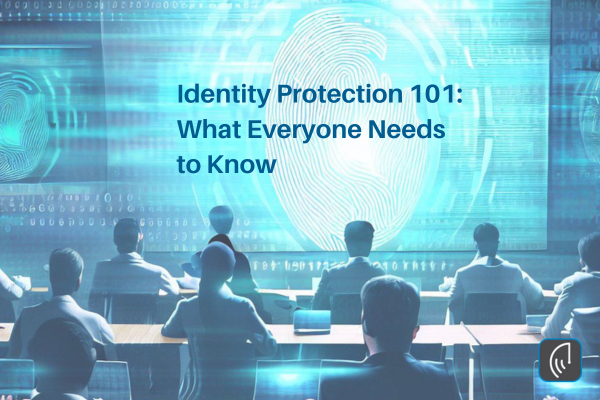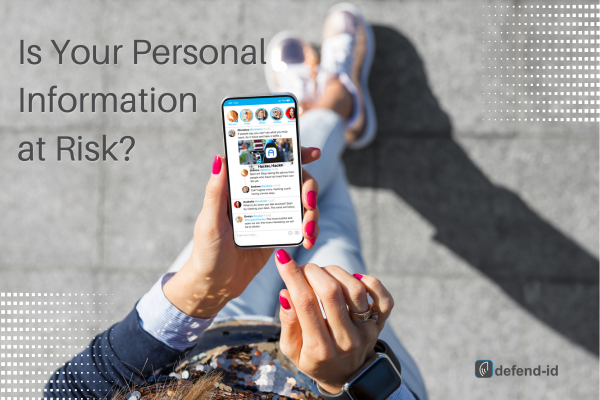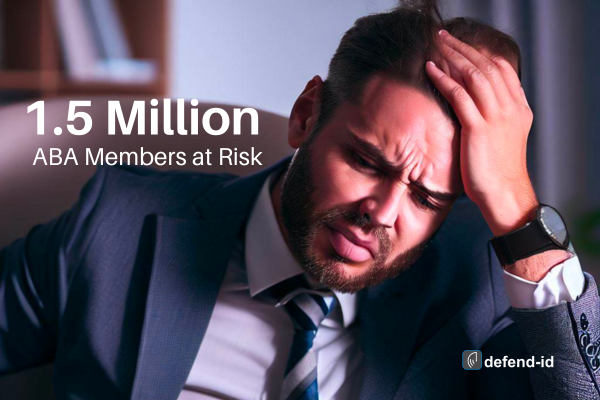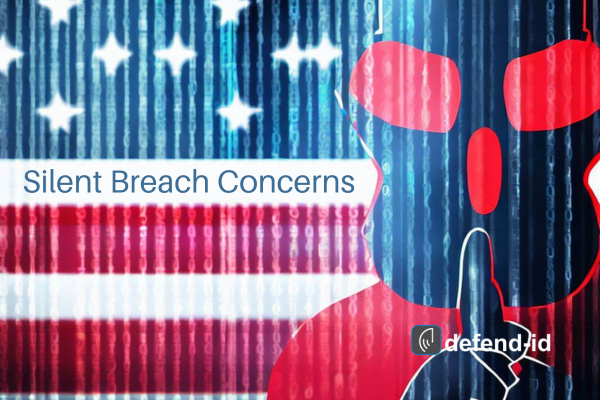
by Brian Thompson | Jun 7, 2023 | Breach, Identity Theft
It’s more important than ever to protect your personal information from cybercriminals. With the rise of online shopping, social media, and cloud storage, our data is constantly shared and stored online. From credit card numbers to social security numbers, our identities are at risk of being stolen and used for fraud. That’s why it’s essential to have a solid understanding of identity protection. In this article, we’ll cover the basics of identity protection, including what it is, why it’s important, and some simple steps you can take to keep your information secure. Whether you’re a tech-savvy individual or someone new to the world of online security, this article is for you. So, grab a cup of coffee, and let’s dive into Identity Protection 101: What Everyone Needs to Know to Keep Their Information Secure!
Types of Identity Theft
There are several types of identity theft that you should be aware of. Understanding these types can help you identify if your information has been compromised and take steps to protect yourself.
The first type of identity theft is financial identity theft. This occurs when a cybercriminal uses your personal information to open new lines of credit or make purchases. They may also use your information to drain your bank account or take out loans in your name.
The second type of identity theft is medical identity theft. This occurs when a cybercriminal uses your personal information to receive medical treatment or prescription drugs. This can hurt your medical records and can even result in incorrect medical treatment.
The third type of identity theft is criminal identity theft. This occurs when a cybercriminal uses your personal information to commit a crime. This can lead to your name being associated with criminal activity, which can have serious consequences.
Signs of Identity Theft
There are several signs that your identity may have been stolen. These include:
– Unfamiliar charges on your credit card or bank account
– Calls from debt collectors for debts you don’t owe
– Notices from the IRS or other government agencies for taxes or benefits you didn’t apply for
– Medical bills for services you didn’t receive
– Denial of credit or loans due to a low credit score
If you notice any of these signs, it’s important to take action immediately to protect your identity. (https://consumer.ftc.gov/articles/what-know-about-identity-theft)
Steps to Protect Your Identity
There are several steps you can take to protect your identity and reduce your risk of identity theft.
The first step is to secure your passwords. Use strong, unique passwords for each of your online accounts and change them regularly. Avoid using the same password for multiple accounts, and don’t share your passwords with anyone.
The second step is to monitor your credit report. Check your credit report regularly for any unauthorized activity. You can get a free credit report from each of the three major credit bureaus once per year.
The third step is to be cautious when sharing your personal information online. Only share your personal information with reputable companies and websites. Be wary of phishing scams, which are emails or messages that try to trick you into giving away your personal information.
The fourth step is to use antivirus software and keep your software up to date. This can help protect your computer from malware and other cyber threats.
Identity Theft Prevention Tips
In addition to the steps above, several other identity theft prevention tips can help protect your identity.
First, be cautious when using public Wi-Fi. Avoid accessing sensitive information, such as your bank account, when using public Wi-Fi. Use a virtual private network (VPN) to encrypt your online activity.
Second, be cautious when sharing your personal information on social media. Avoid sharing sensitive information, such as your social security number or home address, on social media.
Third, be cautious when responding to unsolicited emails or phone calls. Cybercriminals often use these tactics to try to trick you into giving away your personal information.
Finally, check your bank and credit card statements regularly for any unauthorized activity. If you notice anything suspicious, report it to your bank or credit card issuer immediately.
Identity Protection Services
There are several identity protection services available to help you protect your identity. These services monitor your accounts for any signs of suspicious activity and can alert you if your information has been compromised.
Some identity protection services also offer credit monitoring, which can help you keep track of your credit score and stay on top of any changes to your credit report.
What to Do if Your Identity is Stolen
If your identity is stolen, it’s important to take action immediately. The first step is to contact your bank and credit card issuers to report the theft and request a freeze on your accounts.
You should also contact the three major credit bureaus to request a fraud alert on your credit report. This can help prevent any new lines of credit from being opened in your name.
Finally, file a report with the Federal Trade Commission (FTC) to report the identity theft. The FTC can provide you with a recovery plan and can help you take steps to restore your identity.
Identity Protection for Businesses
Identity protection isn’t just important for individuals – it’s also important for businesses. Businesses that handle sensitive customer information, such as credit card numbers and social security numbers, are at risk of cyber-attacks and identity theft.
To protect their customers’ information, businesses should implement strong data security measures, such as encryption and firewalls. They should also train their employees on how to identify and prevent cyber threats.
Finally, businesses should consider investing in identity protection services to monitor their accounts for any signs of suspicious activity and protect their employees – Here is a plan to implement.
Conclusion
Identity protection is essential in today’s digital age. By understanding the risks of identity theft and taking steps to protect your personal information, you can reduce your risk of financial loss and other negative consequences. Whether you’re an individual or a business owner, it’s important to take identity protection seriously and make it a priority. Please share this article…Identity Protection 101: What Everyone Needs to Know!
Related Articles:

by Brian Thompson | May 31, 2023 | Breach, healthcare, Identity Theft
The Importance of Identity Theft Protection
In today’s digital age, protecting your personal information has become more critical than ever before. With the rise of data breaches and cyber attacks, it’s become increasingly easy for criminals to steal your identity and cause damage to your financial and personal life. Identity theft can happen to anyone, regardless of age, gender, or social status. That’s why it’s crucial to take proactive measures to protect yourself from this growing threat. In this article, we’ll explore the importance of identity theft protection and ways to safeguard your personal information. From monitoring your credit report to using two-factor authentication, we’ll give you practical tips to help you stay safe online and offline. So, if you’re concerned about your personal information being at risk, read on to learn how you can protect yourself from identity theft.
Types of identity theft
Identity theft is a crime that occurs when someone uses your personal information without your consent to commit fraudulent activities, such as opening new credit accounts, taking out loans, or making unauthorized purchases. There are different types of identity theft, including financial identity theft, medical identity theft, and criminal identity theft.
Financial identity theft is the most common type of identity theft, where the thief uses your personal information to access your financial accounts and make fraudulent purchases or withdraw cash. Medical identity theft involves the thief using your medical information to receive medical treatment or purchase prescription drugs. Criminal identity theft occurs when the thief uses your identity to commit a crime, which can lead to you being wrongfully accused of the crime.
Common ways identity theft occurs
Identity theft can occur in different ways, including:
### Phishing scams
Phishing scams involve the thief using fake emails or websites to trick you into providing your personal information, such as your login credentials, social security number, or credit card details. These scams often appear to be legitimate, but they can lead to your personal information being stolen and used for fraudulent activities.
### Data breaches
Data breaches occur when a company’s database is hacked, and the thief gains access to your personal information, such as your name, address, social security number, and credit card details. This information can then be used to commit identity theft.
### Mail theft
Mail theft is a common way for thieves to steal personal information. They can steal your mail to obtain your credit card statements, bank statements, or other sensitive documents, which they can then use to commit identity theft.
The impact of identity theft
Identity theft can have a significant impact on your financial and personal life. It can damage your credit score, make it difficult to obtain credit or loans, and lead to financial losses. It can also affect your reputation and cause emotional distress, especially if you’re wrongfully accused of a crime.
How to protect yourself from identity theft
Protecting yourself from identity theft involves taking proactive measures to safeguard your personal information. Here are some tips to help you protect yourself from identity theft:
### Monitor your credit report
Monitoring your credit report regularly can help you detect any unauthorized activities, such as new credit accounts or loans opened in your name. You can obtain a free credit report once a year from each of the three major credit bureaus – Equifax, Experian, and TransUnion.
### Use two-factor authentication
Using two-factor authentication can help prevent unauthorized access to your online accounts. This involves using a password and a second form of verification, such as a fingerprint or a text message code, to access your accounts.
### Use strong passwords
Using strong passwords can help prevent hackers from accessing your accounts. A strong password should be at least eight characters long and contain a combination of letters, numbers, and special characters.
### Be cautious when sharing personal information
Be cautious when sharing your personal information online or in person. Only provide your personal information to trusted sources, and avoid sharing it on public Wi-Fi networks.
Identity theft protection services
Identity theft protection services can help you monitor and protect your personal information from identity theft. These services can provide you with alerts when there’s suspicious activity on your accounts, monitor your credit report, and offer identity restoration services if you become a victim of identity theft.
Tips for selecting an identity theft protection service
When selecting an identity theft protection service, consider the following factors:
### Features
Look for a service that offers comprehensive monitoring and protection features, such as credit monitoring, identity restoration, and fraud alerts.
### Cost
Consider the cost of the service and whether it fits within your budget. Some services offer free trials or low-cost plans, while others can be more expensive.
### Reputation
Research the reputation of the service provider to ensure they’re trustworthy and have a good track record of protecting their customers’ personal information.
What to do if you become a victim of identity theft
If you become a victim of identity theft, it’s important to act quickly to minimize the damage. Here are some steps you can take:
### Contact your financial institutions
Contact your bank, credit card companies, and other financial institutions to report the fraud and cancel any unauthorized transactions or accounts.
### File a report with the FTC
File a report with the Federal Trade Commission (FTC) to report the identity theft and create a recovery plan.
### Contact the credit bureaus
Contact the three major credit bureaus – Equifax, Experian, and TransUnion – to place a fraud alert on your credit report and freeze your credit.
### Work with an identity theft restoration service
Consider working with an identity theft restoration service to help you restore your identity and clear your name.
Identity theft prevention best practices
Here are some best practices to help prevent identity theft:
### Shred sensitive documents
Shred any sensitive documents that contain personal information before disposing of them.
### Protect your mail
Protect your mail by using a secure mailbox or a post office box.
### Keep your software up to date
Keep your software up to date with the latest security patches to prevent hackers from accessing your computer or mobile device.
### Use a VPN
Use a virtual private network (VPN) to encrypt your internet connection and protect your personal information from hackers.
Conclusion
Protecting your personal information from identity theft is crucial in today’s digital age. By taking proactive measures to safeguard your personal information, such as monitoring your credit report, using two-factor authentication, and using strong passwords, you can minimize the risk of becoming a victim of identity theft. Consider working with an identity theft protection service to provide additional monitoring and protection features. If you become a victim of identity theft, act quickly to minimize the damage and work with an identity theft restoration service to help you restore your identity and clear your name.
Is Your Personal Information at Risk? The Importance of Identity Theft Protection – Related articles:

by Brian Thompson | May 18, 2023 | Breach, Identity Theft
The American Bar Association (ABA) is the largest association of lawyers and legal professionals worldwide, with over 160,000 members. However, this prestigious organization recently suffered a significant data breach that exposed the login credentials, putting 1.5 million ABA members at risk who used its old website or career center.
According to the ABA, the breach occurred in March 2023, when an unauthorized third party accessed its network and acquired usernames and hashed and salted passwords. These passwords were encrypted with a random string of characters, but they could still be cracked by hackers over time. Moreover, some of the passwords were default ones assigned by the ABA when the accounts were registered.
This breach poses a serious risk of identity theft for the affected members, especially if they used the same credentials for other online accounts or services. Identity theft occurs when someone uses your personal information, such as your name, Social Security number, or credit card number, to commit fraud or other crimes. According to the Federal Trade Commission (FTC), identity theft affected 4.8 million Americans in 2020, resulting in $3.3 billion in losses.
The consequences of identity theft can be devastating for anyone, especially for lawyers and other legal professionals who handle sensitive and confidential information daily. Identity theft can damage your reputation, ruin your credit score, cause legal problems, impact your ability to earn, and even jeopardize your license to practice law.
If you are one of the 1.5 Million ABA Members at Risk you must take immediate steps to protect yourself. Here are five tips to help you prevent or mitigate identity theft:
- Change your passwords for all your online accounts. Pay special attention to accounts related to your work or finances. Use strong and unique passwords that are not easy to guess or crack. You can use a password manager to generate and store your passwords securely.
- Monitor your credit reports and bank statements regularly for suspicious or unauthorized activity. You can get a free credit report each year from the three major credit bureaus: Equifax, Experian, and TransUnion. You can also freeze your credit reports to prevent new accounts from being opened in your name without your consent.
- Review your ABA member profile and update any outdated or inaccurate information. You can also opt out of sharing your personal information with third parties or receiving marketing communications from the ABA.
- Contact the ABA and report any issues or concerns related to the breach. You can call their toll-free number at 1-800-285-2221 or email them at abaservice@americanbar.org. You can also visit their website at www.americanbar.org for more information and updates on the breach.
- Consider enrolling in an identity theft protection service. Identity protection services alert you of potential threats, monitor your personal information across various sources, and assist you with identity restoration. Some of these services may offer discounts or free trials for ABA members.
The ABA data breach is a serious matter that should not be taken lightly by anyone. By following these tips, you can reduce your risk of becoming a victim of identity theft and safeguard your future as a lawyer or legal professional.
Download: Identity Theft Response Plan for Employers
5 Reasons Employers Offer Identity Protection

by Brian Thompson | Apr 12, 2023 | Breach, Identity Theft
Silent breach management concerns are shown to be a real concern in the United States.
Findings
According to a recent report on cybersecurity by Bitdefender, which surveyed over 400 IT and security professionals in the U.S., France, Germany, Italy, Spain, and the U.K., almost 55% of U.S.-based respondents admitted to keeping a data breach confidential when they knew it should have been reported. This is compared to 44% to 54% of those from other countries. Additionally, the report found that 70% of U.S.-based respondents said they were told to keep a data breach confidential. Silent breach management concerns are showing to be real.
The reasons behind the decision to keep data breaches under wraps were not clear, although Bitdefender Technical Solutions Director Martin Zugec suggested that it could be due to fear of potential monetary backlash in the form of fines or required resources to alert customers.
Top Concerns
In terms of the top threat concerns, the report found that zero-day exploits and software vulnerabilities were the most pressing, followed by phishing campaigns, supply chain attacks, and ransomware. Zugec highlighted the trend of using known vulnerability exploits as a new effective strategy for cybercriminals.
The report also revealed that respondents were worried about potential legal action against their companies due to breach mismanagement. 78% of U.S.-based respondents and 55% of overall respondents expressed this concern. This underscores the importance of having effective breach management procedures in place to mitigate the impact of any potential data breaches.
In summary, the Bitdefender cybersecurity assessment report highlights the prevalence of Silent Breach Management Concerns among security professionals. This calls for greater transparency in breach management and the implementation of effective breach management. Properly implemented protocols can minimize the effects of any potential data breaches.
The report also emphasizes the need for continuous training and education for security professionals. Emphasizing the importance of staying up-to-date with the latest threats and best practices in cybersecurity. This can help organizations better protect their sensitive data and prevent potential breaches.
Find a more in depth analysis of the Bitdfender assessment here: https://www.techtarget.com/searchsecurity/news/365534973/42-of-IT-leaders-told-to-maintain-breach-confidentiality

by Brian Thompson | Mar 15, 2023 | Breach, General, Identity Theft
Silicon Valley Bank (SVB) collapsed on March 10, 2023, which has caused a ripple effect throughout the global financial system. Unfortunately, the SVB Collapse Enables Scammers to take advantage of the situation and use the bank’s downfall to scam people.
SVB was a US-based commercial bank and the 16th largest bank in the country, which also happened to be the largest bank by deposits in Silicon Valley, California. The bank failed after a run on its deposits, which has impacted many businesses and people in the technology, life science, healthcare, private equity, venture capital, and premium wine industries who were customers of SVB.
What they are using
Security researchers have noted that hackers are registering suspicious domains and conducting phishing campaigns, preparing for business email compromise (BEC) attacks. These attacks aim to steal money, steal account data, or infect targets with malware.
Researcher Johannes Ulrich has reported that threat actors are already registering suspicious domains related to SVB that are very likely to be used in attacks. Cyber-intelligence firm Cyble has also published a report exploring developing SVB-themed threats and warning about additional domains. Some examples given in a report published on the SANS ISC and Cyble websites include:
- login-svb.com,
- svbbailout.com,
- svbcertificates.com, svbclaim.com,
- svbcollapse.com,
- svbdeposits.com,
- svbhelp.com,
- svblawsuit.com.
- svbdebt.com,
- svbclaims.net,
- svb-usdc.com,
- svb-usdc.net,
- svbi.io,
- banksvb.com,
- svbank.com,
- svblogin.com.
Many of these sites were registered on the day of the bank’s collapse and are already hosting cryptocurrency scams.
How they are using it
The scammers might attempt to contact former clients of SVB to offer them a support package, legal services, loans, or other fake services relating to the bank’s collapse. Some threat actors are impersonating SVB customers and telling customers that they need payments sent to a new bank account after the bank’s collapse. However, these bank accounts belong to the threat actors, who steal payments meant to go to the legitimate company.
These scam pages tell SVB customers that the bank is distributing USDC as part of a “payback” program. However, clicking on the site’s ‘Click here to claim’ button brings up a QR code that attempts to compromise crypto wallets when scanned.
In another case, the threat actors behind “cash4svb.com” attempt to phish former SVB customers’ contact information who are trade creditors or lenders, promising them a return between 65% and 85%.
SVB Collapse Enables Scammers to take advantage of the situation and use the bank’s downfall to scam people. Overall, people must be vigilant about these scams and take steps to protect themselves from cybercriminals.
related articles

by Brian Thompson | Feb 8, 2023 | Breach, Identity Theft
Artificial Intelligence (AI) has come a long way, bringing numerous benefits. However, it also has the potential to be used for malicious purposes, especially in social engineering. This article will show you how AI can manipulate people and why it’s crucial to be aware of these tactics to protect your personal information.
What is Social Engineering?
Social engineering manipulates individuals into revealing confidential information or performing actions that benefit the attacker. Attackers use various methods, such as emails, phone calls, or in-person interactions. AI can automate these tactics and make them even more sophisticated.
How AI Manipulates People
AI can manipulate people through voice assistants. AI-powered voice assistants can mimic human voices, making it hard to tell the difference between a human and an AI. This can trick individuals into revealing personal information, leaving them vulnerable to attack. Here is an example story from Knowbe4.
Chatbots are another tool that AI uses for social engineering. Chatbots can hold conversations with individuals, leading them to reveal personal information. People often trust chatbots, thinking they are human, but chatbots can be programmed to manipulate individuals into revealing sensitive information, which attackers can then use for malicious purposes.
Why You Must Be Cautious
Attackers value personal information, such as Social Security numbers, credit card numbers, and home addresses. AI-powered social engineering increases the risk of this information falling into the wrong hands. The tactics used are sophisticated and hard to detect.
To protect your personal information, be cautious when interacting with AI-powered voice assistants or chatbots. Provide personal information only to trusted sources. Be wary of suspicious emails or phone calls that ask for personal information.
AI has the potential to manipulate people through social engineering. Be aware of these tactics and protect your personal information by being cautious when interacting with AI-powered voice assistants or chatbots. Only reveal personal information to trusted sources and be cautious of suspicious emails or phone calls.
If you like this article, Artificial Intelligence & Social Engineering: You Need to Know, please share!
Related articles:





